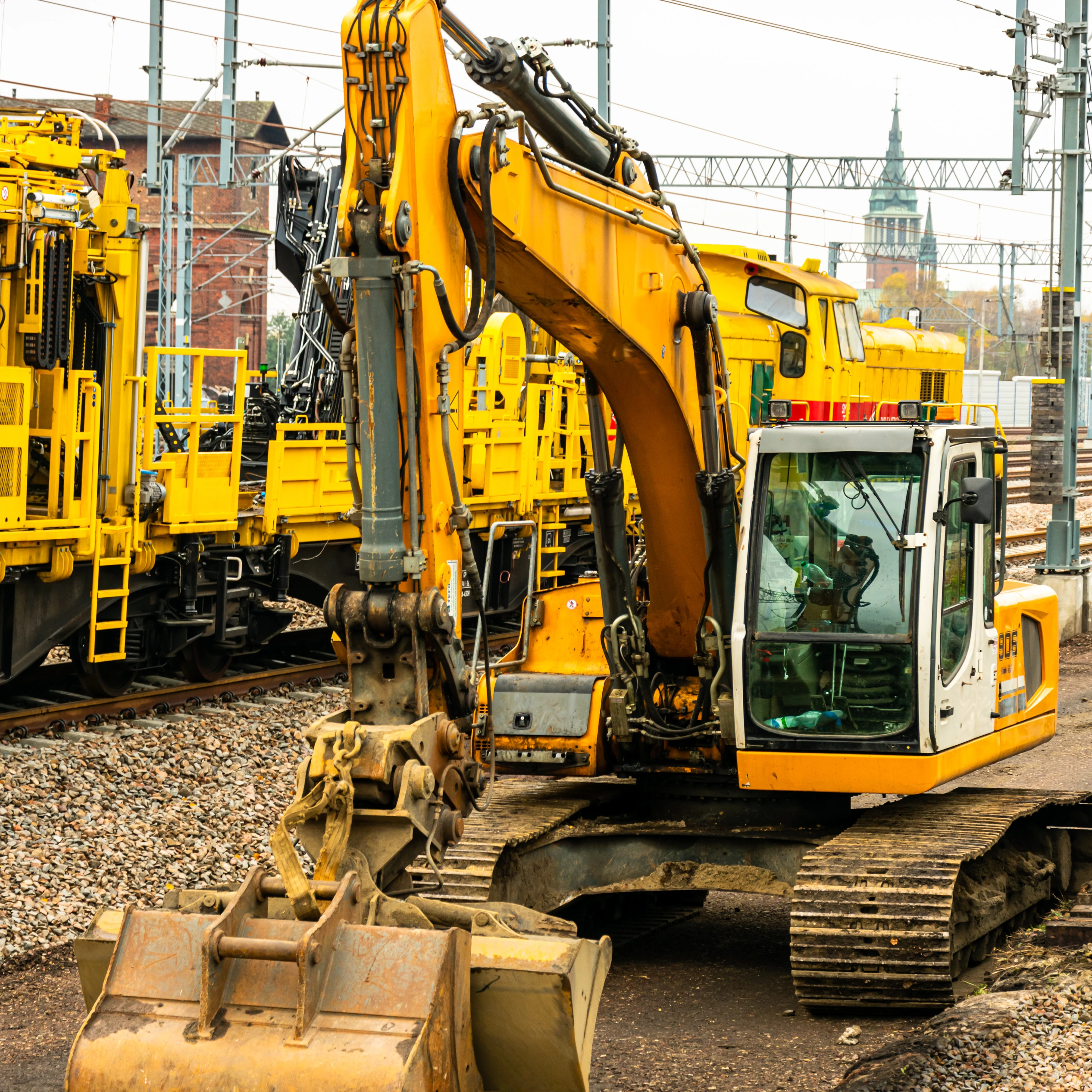Heavy equipment management is crucial for successful construction operations. When equipment is properly maintained, you’ll extend equipment life and optimize your processes. But it’s not always easy to maintain equipment on your own; that’s why automation is your friend. Keep reading to learn the three steps to successfully improving your heavy equipment management strategy with automated systems.
The Importance of Heavy Equipment Management
For construction companies, how well managed your heavy equipment is can make or break your operations. Well-maintained equipment lasts longer and leads to more productive work crews. Poorly managed equipment, on the other hand, can reduce the quality of the project, cause delays in completion, and shorten the equipment’s life cycle. In construction, there are a lot of different pieces of equipment that are needed to complete the job. Without even one of them being available and operational, entire operations can be set back, causing everyone involved in the project to lose money.
One of the leading reasons for poorly-managed equipment is a lack of visibility of that equipment. Many times, important details about heavy equipment concerning maintenance updates and even location are overlooked by management. For example, let’s say that there are typically six excavators always in usage rotation. You know that five are being used at different job sites, so there should be one more available. However, when you go to retrieve it, you find out that it’s due for maintenance. Now that you don’t have the excavator you need, your project gets put on hold. If you had visibility of your equipment, you could’ve planned ahead for this delay or prevented it from happening in the first place. Luckily, there are three simple steps that you can implement into your operations to help you manage your equipment better.
Increase Your ROI by Investing in AirFinder Everywhere
- Loss Prevention. Reduce the amount of loss that occurs during the supply chain process
- Location Coverage. AirFinder Everywhere uses a combination of GPS, Cellular, and WiFi to determine location everywhere
- Security Alerts. Know when a delay in shipment has occurred so the problem
can be addressed immediately.
Step One: Monitor Preventative Maintenance
Staying up to date on heavy equipment maintenance is one of the most influential actions you can take to elongate your equipment’s lifespan and prevent breakdowns. Preventive maintenance involves scheduling regular maintenance checks, inspections, and repairs based on manufacturer recommendations and usage patterns. Implementing a preventative maintenance program helps identify and address potential issues before they escalate into costly breakdowns or dangerous accidents. When equipment is regularly serviced, its overall performance increases significantly. By investing in preventative maintenance, construction companies can reduce downtime, increase productivity, minimize repair costs, and ensure that their heavy equipment operates reliably and efficiently on construction sites.
An important element of your preventative maintenance protocols is the inclusion of thoroughly documented inspections of all heavy equipment. This process should include checking fluid levels, belts, hoses, tires, and any other components that are prone to wear and tear. Document all inspection findings to create a comprehensive maintenance record for each machine. This documentation will enable you to track maintenance history, identify recurring issues, and schedule timely repairs.
Step Two: Optimize Equipment Usage
In the example I shared earlier, the equipment manager discovered that there weren't enough excavators to complete all the jobs that the company was contracted for. A lack of visibility can also result in the opposite problem, where equipment is available but being underutilized. Most companies experience a mixture of both, with the underutilization of some equipment indicating the overutilization of others. Investing in heavy equipment management software provides managers with insight into how often their equipment is being used, helping you ensure that your equipment is being adequately rotated through utilization. This optimized usage of equipment helps to slow the natural wear and tear of equipment and reduce unnecessary maintenance costs. Equipment management software can also help reduce unnecessary replacement costs. Often, when equipment is not tracked properly and not completely utilized, companies buy additional equipment that they think they need. If an excavator is at an unrecorded location, they might think they don’t have enough excavators, leading them to purchase more. But in reality, they do have enough, but they simply aren’t using them because they don’t know where they are. Optimized equipment usage allows employees to coordinate scheduling and allocation, reducing workplace conflict and bottlenecks.
Step Three: Implement a Heavy Equipment Tracking System
A heavy equipment tracking system can help you achieve the first two steps we discussed today with far more effectiveness. These systems track your equipment’s location in real time, without any input from you. Visibility of your heavy equipment’s location tells you where your equipment is, how often it’s being used, and when it’s due for maintenance. It’s difficult to manage so many pieces of equipment with multiple jobs going on at a time; by automating heavy equipment tracking, you can save both time and money while eliminating human error. With the data you get from a heavy equipment management system, managers can also make better informed decisions about how to optimize overall business operations.
Heavy equipment asset management enhances security by reducing the risk of equipment theft. In the unfortunate event of theft, the system can aid in asset recovery by providing real-time location data to law enforcement agencies so that the equipment can be returned and the culprits can be apprehended. Just having these systems in place helps to deter theft and protect valuable equipment investments.
A Breakdown of a Heavy Equipment Tracking System
A heavy equipment tracking system is a software solution designed to monitor and manage heavy equipment usage, location, and maintenance patterns. This system provides real-time data and analytics that can be used to optimize usage, reduce downtime, and improve overall performance. These devices typically use a combination of GPS technology, cellular, and WiFi sniffing to provide real-time location data for equipment, allowing companies to monitor usage patterns and optimize work scheduling across a wide span of locations. Additionally, maintenance tracking capabilities allow organizations to schedule maintenance and repairs based on usage patterns and manufacturer recommendations rather than waiting until the equipment breaks down. Usage analytics can be used to monitor equipment usage and identify trends and patterns, enabling organizations to optimize equipment utilization for lower cost and higher productivity.
Our AirFinder Everywhere solution can help you track your heavy equipment in real time, providing managers with full visibility anywhere and at any time. One of the main features of our solution that construction companies benefit from is geofencing. With geofencing, virtual perimeters can be set around the area where your equipment is located, usually a construction site. Alerts are then set up to notify managers when equipment crosses that barrier, letting them quickly retrieve anything that leaves the site without authorization.
Are you Ready to Improve Your Heavy Equipment Management Strategy?
Effective heavy equipment management is crucial for construction companies using heavy machinery. By implementing a preventative maintenance program, optimizing equipment usage, and using an equipment tracking system, organizations can reduce costs, increase productivity, and improve safety. A comprehensive heavy equipment tracking system is an essential tool for achieving these goals. With the right tools and practices, organizations can ensure their heavy equipment remains well-maintained, operates efficiently, and enjoys a long lifespan. To learn about our AirFinder solution and how it can help you track your heavy equipment, reach out to our team!





